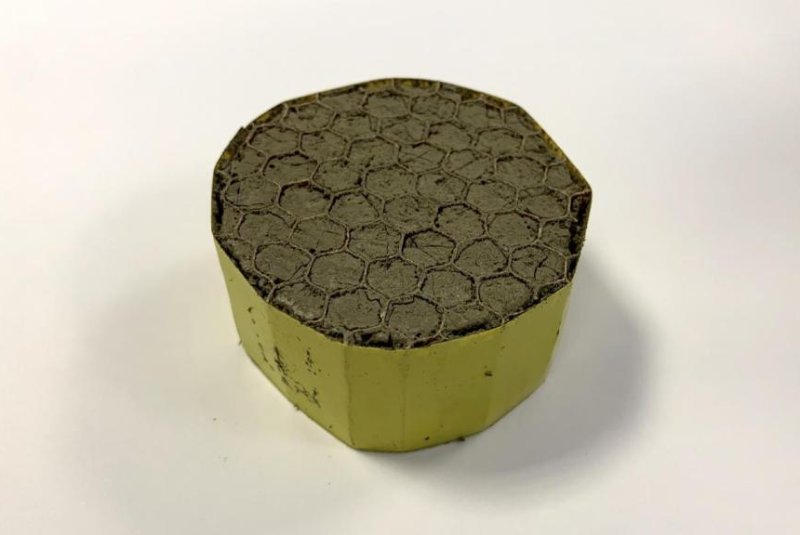The new lightweight aerogel is pictured freeze-casted and suspended inside a honeycomb mold. Photo by University of Bath
June 18 (UPI) -- Researchers at the University of Bath, in Britain, have developed a new graphene-based material that significantly reduces aircraft engine noise.
The meringue-like material -- described Friday in the journal Scientific Reports -- weighs just 2.1 kilograms per cubic meter, or just more than 2 ounces per cubic foot, making it the lightest sound insulating material yet produced.
When scientists tested the new aerogel material's sound absorption abilities, they successfully reduced the roar of an airplane engine by 16 decibels, making a jumbo jet sound more like a hair dryer.
"This is clearly a very exciting material that could be applied in a number of ways -- initially in aerospace but potentially in many other fields such as automotive and marine transport, as well as in building and construction," lead researcher Michele Meo, professor of material sciences at Bath, said in a press release.
Researchers formed the record-setting aerogel by mixing graphene oxide and a polymer. After whipping air bubbles into the solution, researchers freeze-casted the mixture in molds.
"On a very basic level, the technique can be compared with whipping egg whites to create meringues -- it's solid but contains a lot of air, so there is no weight or efficiency penalty to achieve big improvements in comfort and noise," Meo said.
Scientists suggest the new material will be ready for commercial deployment within 18 months. The team plans to test the panels in cars and helicopters, as well as airplanes.
In followup experiments, the scientists plan to tweak the production process in order to tune the material to absorb specific sonic frequencies.
Researchers also plan to investigate other potential uses for the material.
"We envisage that our subwavelength thin and light aerogel-based materials will possess other functional properties such as fire resistance and EMI shielding, and will prove to be novel acoustic materials for advanced engineering applications," scientists wrote in their paper.















